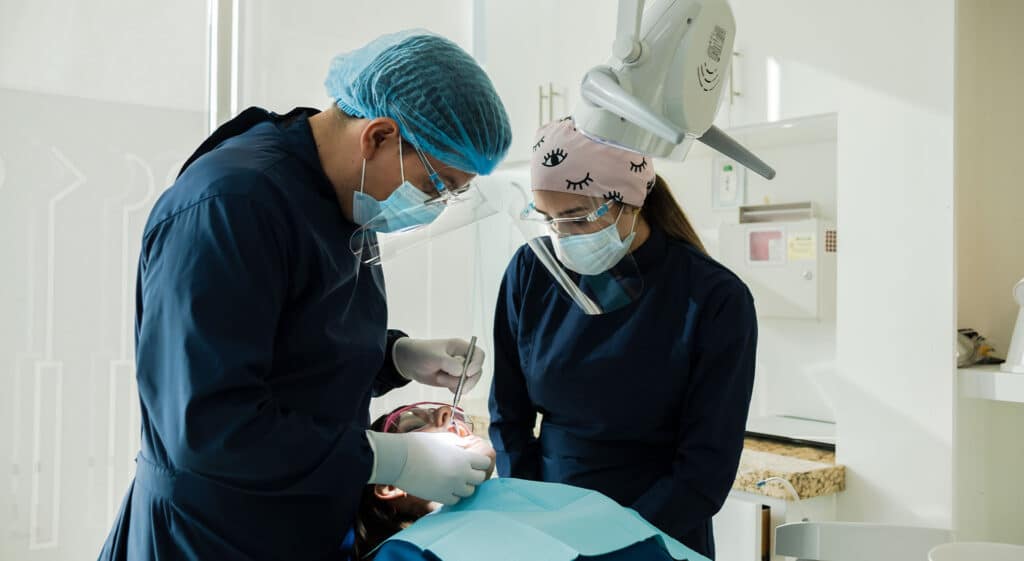Pulpitis and how to avoid with Dental Project
Are you one of the many people suffering from pulpitis? This painful condition is caused by inflammation of the pulp, or the soft tissue inside your tooth. Pulpitis can be caused by a number of things, including cavities, cracks in your teeth, and even gum disease and will require an endodontics to save the tooth.
There are a few things you can do to avoid pulpitis. First, make sure you brush and floss regularly. This will help remove plaque and bacteria from your teeth, which can lead to.

What is Pulpitis?
Pulpitis is an inflammation of the dental pulp. The dental pulp is the central part of the tooth that contains blood vessels, connective tissue, and nerves. Pulpitis can be either reversible or irreversible.
Reversible pulpitis means that the inflammation is resolved and the pulp tissue is healthy. Irreversible pulpitis means that the inflammation has resulted in damage to the pulp tissue and it cannot be repaired.
Pulpitis can be caused by various factors, including tooth decay, trauma to the tooth, and infection. It can also be a side effect of dental procedures such as fillings, root canals, or extractions.
Symptoms of pulpitis include tooth pain, sensitivity to hot or cold beverages, and pain when chewing. If you have any of these symptoms, you should see your dentist as soon as possible for an evaluation.
Treatment for pulpitis depends on whether it is reversible or irreversible. Reversible pulpitis can often be treated with a simple filling or other conservative measures. Irreversible pulpitis will require more extensive treatment, such as a root canal procedure.
Pulpitis is preventable by practices such as brushing and flossing regularly, avoiding sugary snacks and drinks, and visiting your dentist for regular checkups and cleanings.
Symptoms of Pulpitis
Pulpitis is the inflammation of the dental pulp. The dental pulp is the center of the tooth that consists of blood vessels, connective tissue, and nerves. When the dental pulp becomes inflamed, it can become painful.
The pain may be sharp or throbbing and can be triggered by changes in temperature or pressure on the tooth. Pulpitis can be reversed if it is caught early enough, but if it is left untreated, it can lead to an abscessed tooth.
There are two types of pulpitis: reversible and irreversible. Reversible pulpitis is when the dental pulp is only mildly inflamed and the pain is intermittent. Irreversible pulpitis is when the dental pulp is severely inflamed and the pain is constant.
If you have any symptoms of Pulpitis, you should see a dentist as soon as possible so they can determine if the Pulpitis is reversible or irreversible and start treatment accordingly.
Some common symptoms of Pulpitis include:
– sudden, sharp pain in a tooth when exposed to heat, cold, sweet, or pressure
– dull, constant toothache
– tenderness or swelling in gums
– sensitivity to hot, cold, sweet, or pressure that lingers after stimuli has been removed
– discoloration of a tooth
– itching or tingling in gums

Causes of Pulpitis
Pulpitits is the result of an infection in the pulp (the center of the tooth containing nerves and blood vessels). The pulp becomes inflamed and the nerve tissue dies. Pulpitis can be caused by a number of factors, including:
-trauma to the tooth
-tooth decay
-cracked or chipped tooth
-repeated dental procedures
-gum disease
How to Treat Pulpitis
Treatment for reversible pulpitis includes:
-A deep cleaning (scaling and root planing) to remove any tartar or bacteria that may be causing the inflammation.
-A crown or filling to protect the tooth from further damage.
-A root canal procedure may also be necessary if the tooth has been severely damaged.
Treatment for irreversible pulpitis includes:
-A root canal procedure to remove the inflamed tissue and clean out the infected area.
-A crown or filling to protect the tooth from further damage.
Endodontics FAQ’s
1. What is pulpitis?
Pulpitis is the medical term for inflammation of the dental pulp. The dental pulp is the soft tissue inside your tooth that contains blood vessels, nerves, and connective tissue.
2. What are the symptoms of pulpitis?
The most common symptom of pulpitis is a toothache. You may also experience sensitivity to hot or cold beverages, or sweet foods. In some cases, you may not have any symptoms at all.
3. What causes pulpitis?
Pulpitis can be caused by a number of things, including tooth decay, crackedIn teeth , or trauma to the tooth .
4. How is pulpitis diagnosed?
Your dentist will ask about your symptoms and perform a physical examination of your mouth . They may also take X-rays to get a better look at the inside of your teeth and gums . In some cases , they may also recommend a Pulp Test which can help diagnose pulpitis by measuring the electrical conductivity of your tooth.
5. How is pulpitis treated?
The treatment for pulpitis depends on the severity of your condition. In some cases , it may be enough to simply remove the tooth decay or treat the injury. If the inflammation is severe , you may need a root canal procedure to remove the damaged tissue and relieve your pain.
6. Can pulpitis be prevented?
You can help prevent pulpitis by practicing good oral hygiene and visiting your dentist regularly for checkups and cleanings .


